Opinion
Inflation Warning: StatsCan Sounds the Alarm
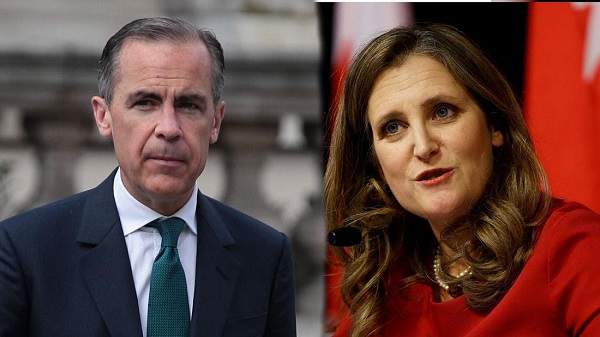
Inflation climbs, energy costs explode, and the government is literally on pause
Picture this: You’re on a plane. The engines are sputtering, the fuel gauge is flashing empty, and the ground is coming up fast. You look to the cockpit for some reassurance, some sign that the people in charge know what they’re doing. But instead, the pilots are gone. They’ve unbuckled their seatbelts, abandoned the controls, and are busy arguing over which one of them gets to be in charge next—because, you know, that’s the real priority right now.
They aren’t governing. They aren’t fixing the problems. They’re trying to save their own political skins while the country burns.
This morning’s Consumer Price Index (CPI) report tells us exactly what’s coming. Inflation is 1.9% year-over-year, and while that number seems stable, it’s a mirage—because once you strip away the government’s temporary tax gimmicks, what’s underneath is an economy about to collapse.
And just when you thought it couldn’t get worse, Trudeau is about to make it worse.
Let’s start with energy, because that’s where the pain begins. Gasoline prices are up 8.6%, natural gas is up 4.8%, and in Manitoba, gas prices just skyrocketed by a staggering 25.9% thanks to a reintroduced gas tax. That’s before Trump’s looming 25% tariff threat, which would send fuel costs spiraling even higher. This isn’t just bad economic policy—it’s a full-blown attack on the working class. Every trucker, every factory worker, every farmer in this country is about to get walloped by higher costs.
And what is Carney’s Liberal Party’s brilliant plan? Another carbon tax hike.
That’s right. While millions of Canadians struggle to afford gas, heating, and food, Trudeau is jacking up the carbon tax—again—on April 1st. That’s not a joke, that’s not speculation, that’s a fact. On that day, the carbon tax will increase to $80 per tonne, driving up gas prices by another 17 cents per liter. Heating your home? Get ready to pay even more. Running a small business? Good luck.
And if you think you caught a break on food prices, think again. The only reason restaurant meals were down 5.1% year-over-year was because of Trudeau’s temporary GST/HST tax cut—which expires in just a few days. Once it’s gone, the illusion of affordability disappears, and food prices will snap back up. Meanwhile, the housing market is still a disaster. Mortgage interest costs jumped 10.2%, rent is up 6.3%, property taxes are rising, and Trudeau is shoving half a million more immigrants into the housing market every year, making it even worse.
And here’s where it gets really ugly. Donald Trump—the current U.S. president—has made it very clear that he’s prepared to slap a 25% tariff on Canadian goods, with a 10% tariff on Canadian energy. What happens then?
- Canadian oil becomes more expensive to export—which means less investment, fewer jobs, and higher energy prices at home.
- Manufacturing takes a direct hit—cars, steel, lumber, and agriculture all get more expensive to sell to our biggest trading partner.
- The Canadian dollar weakens, making everything from imported food to electronics even more costly.
And what is the Trudeau government doing in response?
Nothing. No plan. No strategy. No action. Because they can’t take action. They’ve abandoned ship. They aren’t focused on inflation, trade, or economic survival. They’re focused on themselves.
Trudeau, Mark Carney, Chrystia Freeland, and Karina Gould are on a campaign tour—not for the country, but for the Liberal Party. They’ve literally shut down Parliament—paused democracy itself—so they can focus on their leadership race. Instead of standing before Canadians and explaining how they’re going to stop this economic collapse, they’re off debating amongst themselves over who gets the keys to the sinking ship.
And make no mistake—this isn’t leadership. It’s self-preservation.
Oh sure, they’ll go on CBC and CTV, they’ll look into the camera, nod solemnly, and say they’re “deeply concerned” about affordability. They’ll talk about how they “have a plan” to help Canadians. But let’s be absolutely clear: They cannot execute anything. They can’t pass legislation. They can’t provide relief. They have shut down the government.
The only thing they can do right now is talk. And if they manage to fool enough people into electing them again? Then the real pain begins. More deficits. More immigration. More taxes. The same disastrous Liberal policies that got us here in the first place—only this time, there won’t be a GST holiday to hide the damage.
It’s not just a disgrace. It’s a joke—a sick, insulting joke at the expense of every hardworking Canadian trying to keep their head above water. This country is not some Liberal playground, a sandbox for political elites to bicker over power while the economy crumbles.
And yet, they want you to believe they care about affordability.
Really? Affordability? Because here’s what’s actually happening: The temporary GST break is gone, energy prices are about to skyrocket, and come April 1st, your gas bill goes up again—all thanks to yet another carbon tax hike, courtesy of Mark Carney. That’s right. The man Liberals are grooming to be their next leader is the same unelected banker who cooked up this disaster in the first place.
And now? He gets to inherit it.
So maybe, in some twisted way, this is justice. Maybe it’s actually a blessing that Parliament is prorogued, because it means the Liberals can’t pass any more destructive policies before they’re inevitably thrown out of office. Let Carney take the blame. Let him defend his own brainchild as Canadians get walloped with higher gas prices, higher heating costs, and higher grocery bills.
This is the Liberal legacy: crippling taxes, runaway inflation, and a government too self-absorbed to care. And they have the audacity—the absolute gall—to tell you they’re the ones who will fix it?
Enough. No more distractions. No more backroom power grabs.
Call the election. Face the people. Let Canada decide its future.
Invite your friends and earn rewards
Daily Caller
‘There Will Be Very Serious Retaliation’: Two American Servicemen, Interpreter Killed In Syrian Attack
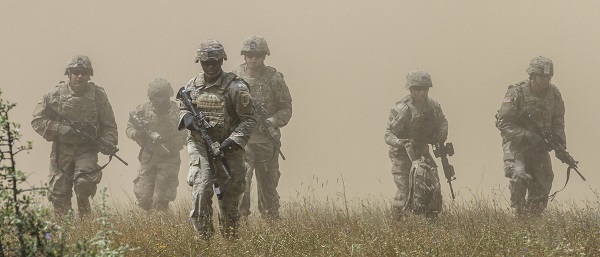

From the Daily Caller News Foundation
Two U.S. Army soldiers and an American civilian interpreter were killed in a Saturday attack in Syria, the Department of War announced.
Sean Parnell, chief spokesman for the Pentagon, announced the three deaths in a statement posted to X, adding that three others were wounded. The attack occurred as the U.S. soldiers were conducting a “key leader engagement,” Parnell stated.
The soldiers’ mission was “in support of on-going counter-ISIS/counter-terrorism operations in the region,” Parnell wrote. The attack occurred in an area Syrian President Ahmed al-Sharaa does not have control, Fox News reported, citing a Pentagon official.
Dear Readers:
As a nonprofit, we are dependent on the generosity of our readers.
Please consider making a small donation of any amount here.
Thank you!
“The soldiers’ names, as well as identifying information about their units, are being withheld until 24 hours after the next of kin notification,” he continued. “This attack is currently under active investigation.”
Secretary of War Pete Hegseth said in a Saturday statement posted on X that the “savage” who perpetrated the attack was “killed by partner forces.”
“Let it be known, if you target Americans — anywhere in the world — you will spend the rest of your brief, anxious life knowing the U.S. will hunt you, find you, and ruthlessly kill you,” Hegseth wrote.
U.S. and Syrian forces came under attack Saturday amid a joint patrol near Palmyra, The New York Times reported, citing Syrian state news agency SANA. U.S. Central Command also confirmed the deaths in a Saturday X post, but noted additional updates about the incident will be provided as they become available.
President Trump responded to the attack on Truth Social:
We mourn the loss of three Great American Patriots in Syria, two soldiers, and one Civilian Interpreter. Likewise, we pray for the three injured soldiers who, it has just been confirmed, are doing well. This was an ISIS attack against the U.S., and Syria, in a very dangerous part of Syria, that is not fully controlled by them. The President of Syria, Ahmed al-Sharaa, is extremely angry and disturbed by this attack. There will be very serious retaliation. Thank you for your attention to this matter!
Business
Fuelled by federalism—America’s economically freest states come out on top

From the Fraser Institute
Do economic rivalries between Texas and California or New York and Florida feel like yet another sign that America has become hopelessly divided? There’s a bright side to their disagreements, and a new ranking of economic freedom across the states helps explain why.
As a popular bumper sticker among economists proclaims: “I heart federalism (for the natural experiments).” In a federal system, states have wide latitude to set priorities and to choose their own strategies to achieve them. It’s messy, but informative.
New York and California, along with other states like New Mexico, have long pursued a government-centric approach to economic policy. They tax a lot. They spend a lot. Their governments employ a large fraction of the workforce and set a high minimum wage.
They aren’t socialist by any means; most property is still in private hands. Consumers, workers and businesses still make most of their own decisions. But these states control more resources than other states do through taxes and regulation, so their governments play a larger role in economic life.
At the other end of the spectrum, New Hampshire, Tennessee, Florida and South Dakota allow citizens to make more of their own economic choices, keep more of their own money, and set more of their own terms of trade and work.
They aren’t free-market utopias; they impose plenty of regulatory burdens. But they are economically freer than other states.
These two groups have, in other words, been experimenting with different approaches to economic policy. Does one approach lead to higher incomes or faster growth? Greater economic equality or more upward mobility? What about other aspects of a good society like tolerance, generosity, or life satisfaction?
For two decades now, we’ve had a handy tool to assess these questions: The Fraser Institute’s annual “Economic Freedom of North America” index uses 10 variables in three broad areas—government spending, taxation, and labor regulation—to assess the degree of economic freedom in each of the 50 states and the territory of Puerto Rico, as well as in Canadian provinces and Mexican states.
It’s an objective measurement that allows economists to take stock of federalism’s natural experiments. Independent scholars have done just that, having now conducted over 250 studies using the index. With careful statistical analyses that control for the important differences among states—possibly confounding factors such as geography, climate, and historical development—the vast majority of these studies associate greater economic freedom with greater prosperity.
In fact, freedom’s payoffs are astounding.
States with high and increasing levels of economic freedom tend to see higher incomes, more entrepreneurial activity and more net in-migration. Their people tend to experience greater income mobility, and more income growth at both the top and bottom of the income distribution. They have less poverty, less homelessness and lower levels of food insecurity. People there even seem to be more philanthropic, more tolerant and more satisfied with their lives.
New Hampshire, Tennessee, and South Dakota topped the latest edition of the report while Puerto Rico, New Mexico, and New York rounded out the bottom. New Mexico displaced New York as the least economically free state in the union for the first time in 20 years, but it had always been near the bottom.
The bigger stories are the major movers. The last 10 years’ worth of available data show South Carolina, Ohio, Wisconsin, Idaho, Iowa and Utah moving up at least 10 places. Arizona, Virginia, Nebraska, and Maryland have all slid down 10 spots.
Over that same decade, those states that were among the freest 25 per cent on average saw their populations grow nearly 18 times faster than those in the bottom 25 per cent. Statewide personal income grew nine times as fast.
Economic freedom isn’t a panacea. Nor is it the only thing that matters. Geography, culture, and even luck can influence a state’s prosperity. But while policymakers can’t move mountains or rewrite cultures, they can look at the data, heed the lessons of our federalist experiment, and permit their citizens more economic freedom.
-

 Energy2 days ago
Energy2 days agoTanker ban politics leading to a reckoning for B.C.
-
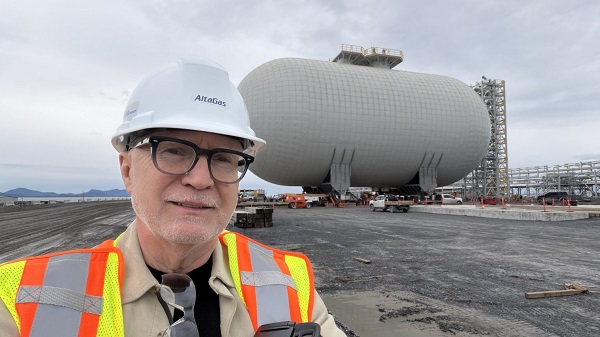
 Energy2 days ago
Energy2 days agoMeet REEF — the massive new export engine Canadians have never heard of
-

 Energy21 hours ago
Energy21 hours agoCanada’s future prosperity runs through the northwest coast
-

 Fraser Institute2 days ago
Fraser Institute2 days agoClaims about ‘unmarked graves’ don’t withstand scrutiny
-

 Alberta2 days ago
Alberta2 days agoHere’s why city hall should save ‘blanket rezoning’ in Calgary
-

 Business2 days ago
Business2 days agoToo nice to fight, Canada’s vulnerability in the age of authoritarian coercion
-
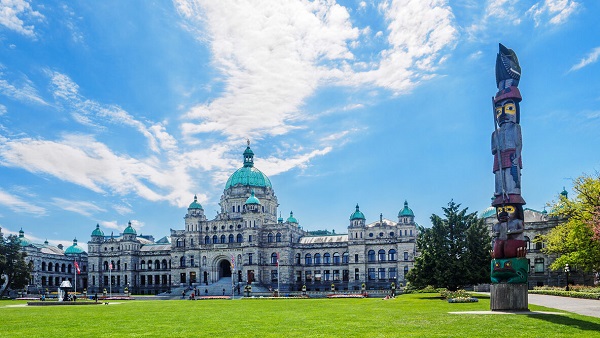
 Business2 days ago
Business2 days agoUNDRIP now guides all B.C. laws. BC Courts set off an avalanche of investment risk
-
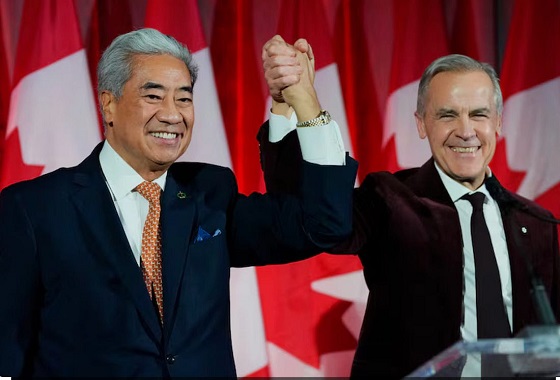
 Fly Straight - John Ivison2 days ago
Fly Straight - John Ivison2 days agoMPs who cross the floor are dishonourable members






